2009 – 9th International Biennial of Ceramics Manises, Valencia, Spain
According to Taoist philosophy, nothing in the physical realm exists as a singular entity and always has a dualistic relationship, with regard to its chi structures. Without this polarity a dynamic isn’t possible. Through the study of these dynamics, its possible to perceive the Tao , which exists in a non dualistic dimension.
Simcha uses ceramics to investigate the elements of ambiguity and the dynamic of opposites. Ambiguity is expressed by exploring the ratio between mass, volume and balance.
She constructs simple, precise shapes to enclose and contain space. The works are slab-built, which gives the impression of solid and massive bodies, when they are, in fact, surprisingly light and delicate. In this contrast between appearance and reality, the relationship of the interior space changes, becomes intimate and creates an illusion of the object’s instability.
2008 – Winner of the 26th Gold Cost International Ceramic Art Award, Gold Coast City Art Gallery, Australia
The dynamic of opposites is expressed in a way that juxtaposes the precise and controlled building and graphic design of the ceramic work with the unpredictable firing technique of “Naked Raku’.
Simcha Even-Chen, has been a clay artist living in Rehovot, Israel, and active ceramicist since 1996, in addition to being a Senior Scientist at the Medical School, Hebrew University, Jerusalem. ( Her scientific background is obvious in the precision and style of her sculptures )
2011- CERCO-11, International Prize of Contemporary Ceramics, Zaragoza, Spain
2009 – The Third International Festival of Postmodern Ceramics – CERAMICA MULTIPLEX, Varaždin, Croatia
2009 – First Prize in the Competition of Design and New Forms in Ceramic, LXXIX Exhibition of Pottery and Ceramic of La Rambla, Cordoba, Spain
Where did you study ceramics or another art discipline?
I took ceramic courses for two years (1994-1996) at the Rehovot Culture Foundation. The courses were mainly on wheel throwing and glaze preparation. Most of the knowledge accumulated after that is self-thought and from the literature.
Which reasons do you have for choosing clay as means to express yourself or realise your ideas, concepts or forms?
I have always been fascinated by the elusive harmonies created when a precise controlled architectural element is brought together with intricate surface designs and colors to generate the complete object and induce an aesthetic as well as intellectual stimulus. The plasticity of clay allows me to explore these processes.
I have used in the past wheel throwing and sawdust firing, and experimented with the relationship between the clean minimalistic shapes and “storm” of surface colors generated by the spontaneous movement of the fire.
Combination of slab building and naked raku techniques, gives me more flexibility and ability to work on more complex relationships, and I have been using these techniques for six years.
Which message you hope to convey to your spectators?
I use ceramic sculptures to investigate the elements of ambiguity and dynamic of opposites. These are achieved by exploring the ratio between mass, volume and space. In my works I’m dealing with issues such as tensions between polarities, with fragmentation and constructions and with illusions. These concepts are guidelines for my treatment of space in the context of surface-volume relationships. The division of the body surface between white and black, as well as the use of lines softens the shape( see ” Dispersion ” above ), simultaneously placing the grid or lines on the edge of the shape, so that they follow the shape, completely dissolve the hard lines. Viewing from different angles, surface and volume are blurred, giving an illusion of flatness (See ” Illusion ” above).
This idea is strengthened and extended by working with pairs ( see below ” Dialogs )) or creating a composition of a few units, where new volumes and planes are achieved by way of the lines or grid are virtually joined; the ratio of parts to the whole is changing and two and three dimensions are played against each other in a sophisticated manner (See ” Split ” )
While the black sculptures may seem massive and heavy, their weight is light when actually lifted. Their stance appears fragile when placed on their convex side, but they are full of energy and movement. Once again, the duality of heavy-light, stability versus instability, negative and positive shapes, contrast between appearance and reality, comes to the fore.
In my recent work, I focus on tension and balance through the juxtaposition of forms upon one another. Different levels of relationships are created at the contact point between the bodies; physical balance, ratio between the geometric surfaces pattern and the structure of the bodies and the tension between the surface and the amorphous patterns resulting from the raku technique (see ” A Moment ” above).
2006 – Second Prize, L’Alcalaten Prize, 26th Concurs International de Ceramica, L’Alcora, Spain
2009 – 29th Concurs International de Ceramica, L’Alcora, Spain
◊
Which importance has design in your work and what is the relation between design and clay?
My body of work deals with the construction of architectural geometrical shapes, their fragmentation, and the rapport generated when they are combined to form an assemblage. The use of the geometric design on the surface adds another dimension to each object on its own, but also has an impact on the fractures between objects in a group, as the flow of lines and shapes redefines the significance of each shape and gives a visual perception of unity and harmony to the work.
What is the meaning of color for you and your work and what is the relation between color and clay?
I use only black and white, mellowed by the spectrum of in-between shades of grey, all characteristic of smoke-fired raku, while exploring and searching for harmony, to make my ideas sharper and more attractive.
2010 – III Biennale International de ceramic de Marratxi (BICMA), Museum Del Fang, Maratxi, Spain
◊
What was for you the most important moment in your ceramic career?
The turning point in my career was receiving second prize in 26th Concurs International competition de Ceramic, L’Alcora, Spain (2006), which was followed by the break-through of exhibiting at important International Exhibitions, rather than local Israeli ones.
Which artist is or has been an inspiration for you?
I admire and was inspired by the steel sculptures of Richard Serra.
Which ceramic works and ceramist do you admire in your own country and internationally?
Daphne Corregan, Kaneko Jun, Yeung Yuk Kan, Bodil Manz and Gordon Baldwin
Do you have a gallery where we can see your work or where you exhibit frequently?
Gallery and Museum Shops which exhibit and sell my works:
1. NUMMER40, Modern Art & Design Gallery 2e Loolaan 40, 7009 AT, Doetinchen, Nederland http://www.nummer40.com
2. Eretz-Israel Museum Gift Shop, Tel-Aviv, Israel
3. Begin Heritage Center – Museum Shop, Jerusalem, Israel
Do you have a website? www.simcha-evenchen.com
Triple Balance
2011 – Gangjin Festival International Ceramic Exhibition, South Korea
Square Enigma.
2008 – Sindy Myer Fun international Ceramic Award, Shepparton Art Gallery in association with La Trobe University, Australia.
All the above featured pieces were of a Slab-build, burnished, terra sigillata & Naked Raku
◊◊◊
Below are some non sculptural pieces by Simcha.
All Photos by Ilan Amihai
◊◊◊

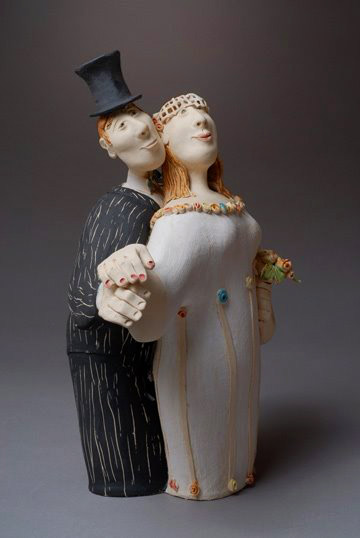
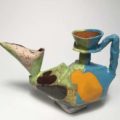
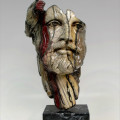
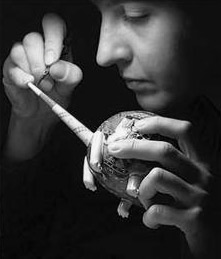








































































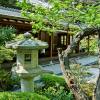
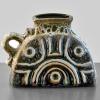
2 Comments
I so admire Simcha’s artwork. Now I have a better undersanding of the thought process. Thanks for sharing.
It looks great. Thanks again.